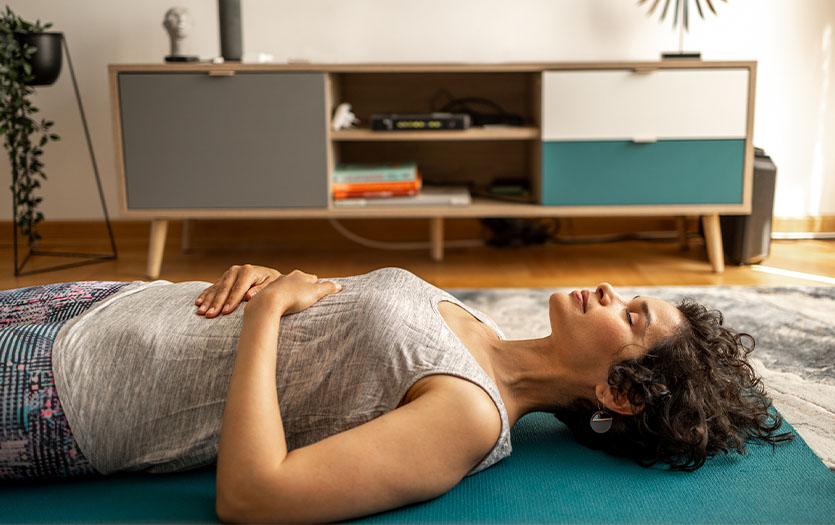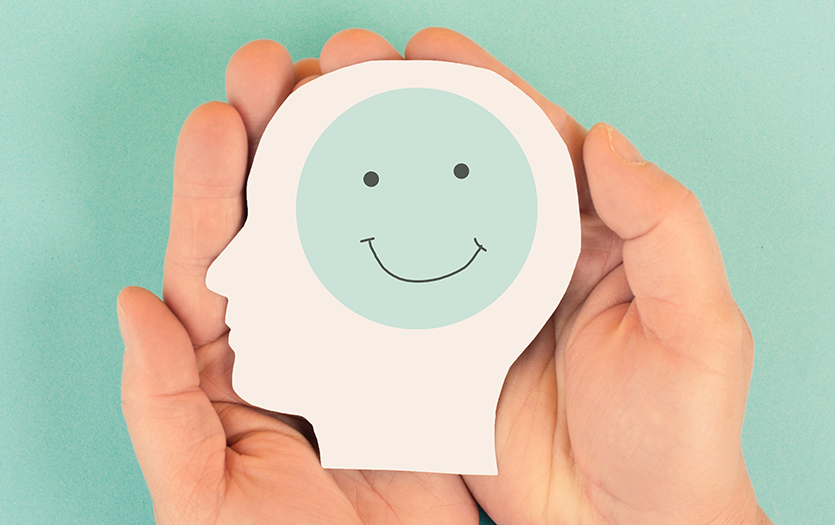
Breathing exercises are powerful tools for promoting relaxation, reducing tension and relieving stress. As we discuss some of the methods and techniques, remember that breathing exercises are not a replacement for professional intervention if you suffer from anxiety, depression or another mental health condition. They are simply another tool to keep in your toolbox.
Why breathing exercises work
When you breathe deeply, your brain sends a message to calm down and relax. The brain then relays this message to your body. When you are stressed, the body responds with an increased heart rate, fast breathing and high blood pressure. Breathing techniques can help address all of these symptoms.
See what a mindfulness expert has to say about the breath.
Techniques
Breathing exercises are easy to learn and can be performed anywhere, as they don’t require any special equipment. Below, we will go through the steps for three popular techniques, but there are so many methods to explore. We encourage you to search online, download an app or speak to your provider to discover more approaches that could offer relief.
Morning breathing
Try this exercise when you first get up in the morning to relieve muscle stiffness and clear clogged breathing passages. You can also use it throughout the day to relieve back tension.
- From a standing position, bend forward at the waist.
- Keep your knees slightly bent and let your arms dangle close to the floor.
- Breathe in slowly and deeply. As you breathe in, return to a standing position by rolling up slowly, lifting your head last.
- Hold your breath for just a few seconds in this standing position.
- Breathe out slowly. As you breathe out, return to your original position, bending forward from the waist.
Repeat as many times as you like. Give yourself a moment of mindfulness to notice and note how you feel at the end of the exercise.
Belly breathing (diaphragmatic breathing)
Breathing with your diaphragm, also called diaphragmatic breathing (belly breathing), helps your lungs expand so that they take in more air. To perform this method:
- Lie on your back. You can put a small, rolled towel behind your neck or use a pillow for comfort. You can also prop yourself up on several pillows if you prefer.
- Put your left hand on your belly and your right hand on your chest. Notice how your hands move as you breathe in and out.
- Practice filling your lower lungs by breathing so that your "belly" (left) hand goes up when you inhale and your "chest" (right) hand remains still. Keep your shoulders relaxed and don't shrug. Always breathe in through your nose and breathe out through your mouth. Repeat 8 to 10 times.
- When you have filled and emptied your lower lungs 8 to 10 times, add the second step to your breathing. Inhale first into your lower lungs as before, and then continue inhaling into your upper chest. As you do so, your right hand will rise and your left hand will drop slightly as your belly falls.
- As you exhale slowly through your mouth, make a quiet, whooshing sound as first your left hand (belly) and then your right hand (chest) fall. As you exhale, feel the tension leaving your body as you become more and more relaxed.
- Practice breathing in and out in this way for 3 to 5 minutes. Notice that the movement of your belly and chest rises and falls like the motion of rolling waves.
Give yourself a moment of mindfulness to notice and note how you feel at the end of the exercise.
4-7-8 belly breathing
This method of belly breathing involves counting as a way to incorporate longer exhales, aiding in relaxation.
- Lie on your back or sit in a comfortable position. When lying down, you can put a pillow under your head and knees.
- Put one hand on your belly just below your ribs and the other hand on your chest.
- Take a deep, slow breath through your nose and into your belly. Silently count to 4 as you breathe in. You should feel the hand on your belly move out, while the hand on your chest does not move. Hold your breath, and silently count from 1 to 7.
- Breathe out through your mouth. Breathe out completely as you silently count from 1 to 8. Try to get all the air out of your lungs by the time you count to 8.
Repeat these steps 3 to 5 times. Give yourself a moment of mindfulness to notice and note how you feel at the end of the exercise.
More resources
If you found this post helpful, you might enjoy these articles from the Parkview Dashboard.
Calm is just around the corner
How to use tapping to ease an anxious mind
The art of sway - a time for grace
Five ways to protect your heart from stress
Bringing mindfulness into your home
Tips for managing anxiety during continuous change
Guided meditation for intentional pause
The power of walking meditation
If you are struggling with symptoms and seeking professional assistance, the Parkview Behavioral Health HelpLine is available 24 hours a day at 260-471-9440 or 800-284-8439. Our experienced specialists can answer your questions, provide recommendations and help arrange care.
Copyrighted material adapted with permission from Healthwise, Incorporated. This information does not replace the advice of a doctor.



